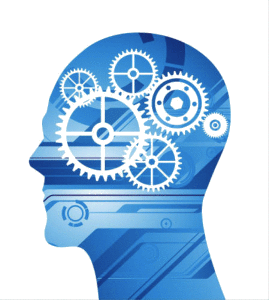 When answering this question we must first be careful to
define just what it is we mean by intelligence. Different definitions and interpretations
are discussed in an earlier post; What is Intelligence.
When answering this question we must first be careful to
define just what it is we mean by intelligence. Different definitions and interpretations
are discussed in an earlier post; What is Intelligence.
After all
under the most general definitions, it is clearly possible to improve
intelligence. Why did we spend so much time at school if we were not able to improve
our ability to learn and solve problems.
In the g factor model of intelligence, these kinds of
abilities that it is intuitively obvious can be improved through study, are
grouped together under Crystallized Intelligence (Gc). But what about the other
key aspect, Fluid Intelligence (Gf), is it also possible for an individual to
increase their natural ability to solve novel problems independent on any relevant
knowledge or experience they may have.
For most of human history, in fact right up to the end of
the twentieth century, it was widely believed throughout scientific and
academic communities that it was impossible for someone to increase this kind
of intelligence. This was due to the idea that the fundamental characteristics
of fluid intelligence were determined by genetic factors.
Increasing evidence from the last two decades has been challenging
that point of view, and today there is widespread support for the idea that it
is possible to improve Gf.
At the statistical
level, concerning general populations, it appears it is happening naturally. Since
the 1980s researchers have repeatedly measured the Flynn effect. Named after
James Flynn following his 1987 publication, ‘Massive IQ gains in 14 nations: What IQ
tests really measure’, the Flynn effect is the apparent gradually increase
in a populations IQ, averaging around 3 IQ points per decade.
There are many different explanations for this effect, from
improved nutrition, more test aware children, to more stimulating environments.
None of these explanation can conclusively demonstrate it alone is responsible,
and it is entirely possible a more complex interaction of these and more
factors combine to give improved IQ score. What is clear, is the effect is
real; the increase is consistently seen in populations from all across the
globe.
For the time being let us leave the gradual statistical
march of IQ scores, and turn our attention to the individual, as this may have
a far greater significance on our understanding of intelligence. Is it possible
for a person to make a noticeable improvement in their own intelligence?
Developments in neuroscience are repeatedly demonstrating
the phenomenal plasticity of the human brain. Studies such as; ‘Neuroplasticity: Changes in grey matter
induced by training’ by Draganski et al, have shown that mentally
stimulating training induces selective structural changes within the brain.
These changes in turn improve the mental processing associated with a
particular skills or ability.
Are these structural changes in the brain useful for
improving Gf?
The key in the search for a training regimen that would
allow an individual to improve their intelligence is that any gains they make
must be transferrable. A wide variety of ‘Brain Training’ games and activities
have been put examined, and unfortunately the results have not been promising. Owen
et al, summarised their finding in ‘Putting
brain training to the test’, as “Although improvements were observed in
every one of the cognitive tasks that were trained, no evidence was found for
transfer effects to untrained tasks, even when those tasks were cognitively
closely related”.
Although this finding is repeatedly reinforced for the vast
majority of brain training exercises, it appears not all brain training games
are created equal. In 2008, Suzanne Jaeggi, Martin Buschkuehl,
John Jonides, and Walter Perrig. published their study Improving fluid intelligence with training
on working memory. They showed, using a particular cognitive training
exercise known as Dual N-Back, that participants could through developing their
working memory, achieve a lasting and transferrable increase in their fluid
intelligence.
The findings of Jaeggi’s study have since been replicated. The
success of these studies suggests a new approach; perhaps certain mental
attributes like working memory formed a foundation to Gf. By improving these,
individuals would also experience a knock on improvement in Gf.
More exercises that improve working memory have now been discovered,
and further candidates for foundational attributes that underlie fluid
intelligence have also been identified. Although the field is still in its
infancy, there can now be little doubt, it is possible for people to increase
their intelligence.


